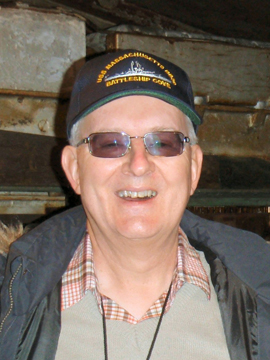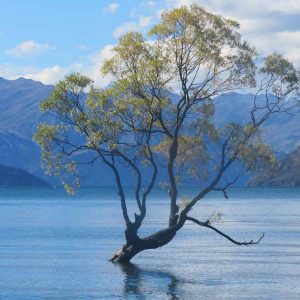Barcelona is a wonderful city, but if you are visiting for just for a few days you may not get time to appreciate the whole city. However, there are several places of interest in Barcelona you should really try to visit. Here are a few tips to help you make the most of your time there.
You will easily find the ‘Placa del Porta de la Pau’ a square at the coastal end of La Rambla. This opens towards the sea where you will find the monument to Columbus. The ‘Monument a Colom’ is a 50-metre high iron column, which supports the statue of Columbus. Around the base are various scenes depicting the beginning of his voyage, the meeting of the natives and the return of Columbus. There are steps leading down to glass double doors. If it is open (closes approx. 1 – 4 pm, as do most of the shops) you pay a small sum and a staff member will take you in a tiny elevator almost to the top of the column. You emerge from the lift into a round, enclosed room from where you can see almost the whole of Barcelona.
There has been much remodelling along the waterfront where the Olympic Village for 1992 games was built. The village has an Olympic Port, which is now a lively centre with bars, restaurants and cafes.
Also worth a visit is La Fusta Wharf (Moll de la Fusta), an area reclaimed from the old port and transformed into a long promenade with a row of modern restaurants, cafes and bars. A wooden drawbridge connects it with ‘Moll d’Espanya’ (Espanya Wharf), the site of a large gambling complex offering recreational and commercial centre plus a huge Aquarium, the ‘Centre de Mar’.
The Aquarium is well worth seeing – all brochures extol the virtues of this huge place and they make no false claims. If it were raining then this would probably be your saviour!
The road leading directly inland from the Column is La Rambla, a street made up of seven different sections each called Rambla de. … The part of this street seen from the waterfront looks absolutely nothing, but as you walk further inland it becomes obvious why locals and tourists alike absolutely adore it. To the right and to the left, tiny narrow streets lead off to various interesting areas.
If you walk the length of the Rambla (heading inland) you will, after 15/20 minutes brisk walk from the sea front, come to a beautiful square called Placa De Catalunya. You cannot miss this square, it has huge statues with beautiful fountains and the large department store ‘El Corte Ingles’ to one side.
In the square you usually see a man with a cart selling food for pigeons and other birds. Once people start to feed them it is an incredible sight. I suppose much like Trafalgar Square in London – but much more dramatic with the amount of birds attracted.
There is a Metro station on the main Rambla called Drassanes; Catalunya Square is just two stops on the green line. Most of the station people speak English so no problems buying your ticket.
However, if you decide to walk to the square, you will see many interesting things – the restaurants with sea food laid out in the windows, the cafes called ‘Pans’ – selling baguettes stuffed with the most mouth-watering fillings, hot and cold, cheap and slightly dearer but still a good lunch washed down with water, Coke, juice etc. At lunchtime everyone, workers and tourists, make a beeline for one of the ‘Pans’ – it is a good quality, reasonable fast-food sandwich outlet.
If you decide not to do that length of walking (or Metro) to the Square then do walk up the Rambla from the Port and turn right into Calle de Ferran, which leads to the Placa St. Jaume (St. Jame’s Square) in the Gothic Quarter (Barri Gotic). Then turn left into Calle Cuitat and walk to the Pla de la Seu where you will find the most incredible Gothic Cathedral. Beware, it is a complete maze of streets and you should either ask your way to the Cathedral or (this is what I did!) get a taxi from the waterfront straight into the Gothic Quarter by the Cathedral, which is actually in a pedestrianised area. However the taxi drops you just 100 yards away.
If you can only do one or the other, opt for the Cathedral. I doubt you will have ever seen anything like it before. Inside is breathtaking! Make sure you visit the Cloisters with the thirteen white geese!
The Temple of the Sagrada Familia (The Temple of the Holy Family) is a symbolic structure, still unfinished after 300 years and designed by Antoni Gaudi. He spent forty years of his life designing this and various other projects in Barcelona and, when he died, his designs for the Cathedral were continued and are still being used to complete the building today. Gaudi is buried in a church under the Cathedral. The whole building is the most improbable you will ever see with soaring spires and structures that look as if they could not possibly be supported safely.
At the rear of the cathedral is a facade representing the 12 Apostles and the figures on this facade are reminiscent of Darth Vader or some from a similar sci-fi world. Even the faces of the horses are incredible. You cannot believe that these designs were produced all these years ago – Gaudi was well before his time but a very private man who refused all offers to elevate him and his work to higher recognition and financial rewards.
Antoni Gaudi loved Barcelona and asked only to be allowed to work and live there – a mild, unassuming man by all accounts. Slightly eccentric but brilliant. There is a small museum to one side of the Sagrada – well worth visiting if you have time.
Gaudi’s other well know work of art is Guell Park – take a taxi and ask for Parc Guell, the most famous park in Barcelona. “Outrageous modernism” – “surrealistic island” – “nightmare expressionist” are just a few of the comments that have been made … but it’s incredible. Do not miss this! Two extraordinary buildings flank the main entrance to the park. On the roof are huge orbs, one you can go into and buy souvenirs. The outside steps leading up to the park boasts a huge mosaic lizard halfway up. At the top of the steps is the Hundred Columns room, an outside room with column structures that were going to be a market place. Go in and look up at the strange ceiling decoration. When the park was first built, Gaudi intended it to be a private estate but it was opened to the public in 1922. Above the columns is a suspended patio with strange curved walls and seats made of mosaics showing patterns and pictures of strange and beautiful designs. On the back of those curving walls are lions or griffin’s heads providing water spouts to the drainage system of this huge area.
In a cave in the cliff walls at the back of this ‘patio’ is a little bar where you can get a lovely cold beer and a baguette, pizza or tortilla. You can only sit outside here – but then you would want to, as your view is one of unbelievable splendour! Antoni Gaudi himself lived in this park and his house is now a museum with the most beautiful and weirdly designed furniture, walls, ceiling and floor tiles. If you only pass Parc Guell on a tourist bus you will only see the front of this park. Whilst this would be a shame, even seeing only the front entrance is better than not seeing it at all.
The three main places to see are Guells Park, the Sagrada Familia and the Gothic Cathedral – please don’t miss these!












